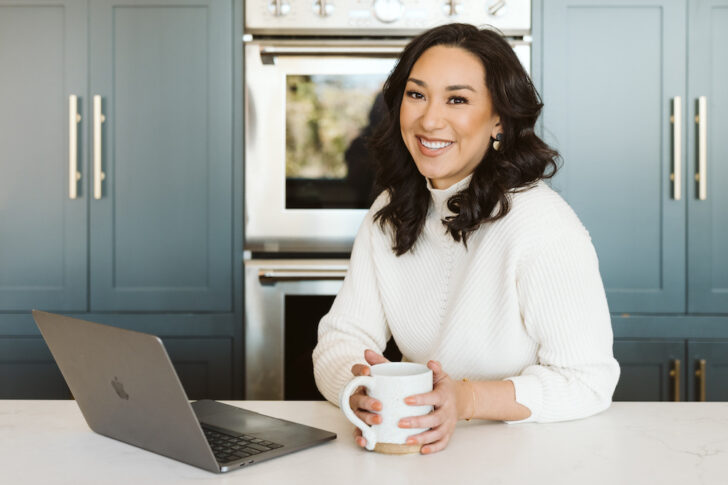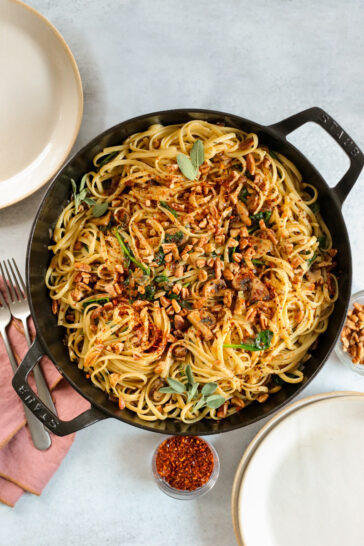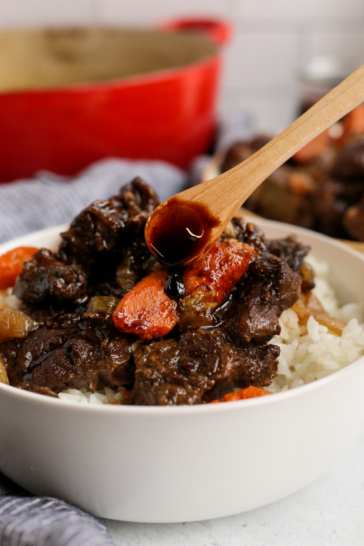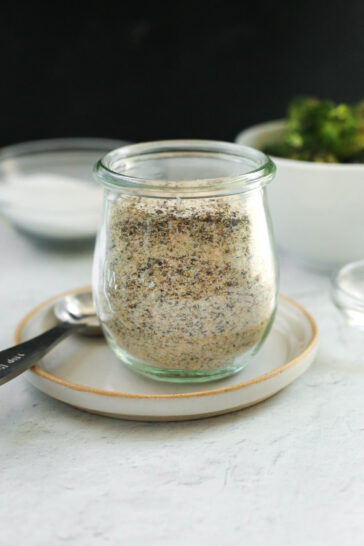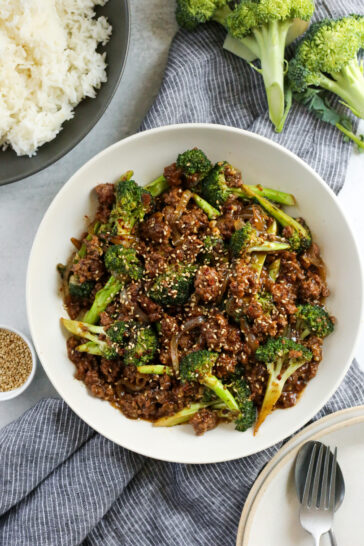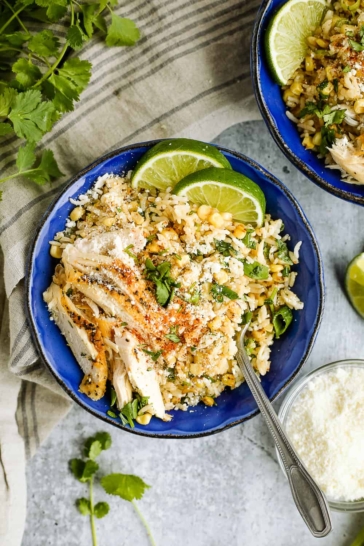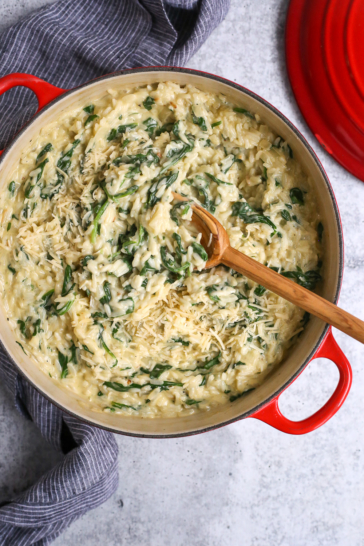Coffee is one of the most popular beverages in the world – I’m a big fan myself! But if you feel overwhelmed by the sheer number of options out there, don’t stress. This is the complete guide to understanding the difference between cold brew coffee vs. espresso. You’ll be able to order with confidence and make smarter shopping decisions to get your coffee fix at home. Plus, learn about the amount of caffeine in both options so you’re fully informed about whichever option you’re drinking.

When it comes to cold brew coffee vs. espresso, there are a few main differences to consider:
- Brewing Method
- Brewing Time
- Flavor
- Caffeine Content
- Cost
I’ll cover each of these in more detail in this ultimate guide to cold brew coffee vs. espresso. As a coffee lover, I’ve been drinking the stuff for a long time! It’s the first thing I look forward to in the morning. And as a dietitian, it often comes up when I’m working with folks in a 1:1 setting. If you’re wondering which one is better for you, keep reading!
Use the table of contents below to jump ahead to any of the sections.
What I’ll Cover In This Post
Note that this post doesn’t focus on caffeine and health benefits or risks. For that, I recommend this quick read about what doctors wish people knew about caffeine.
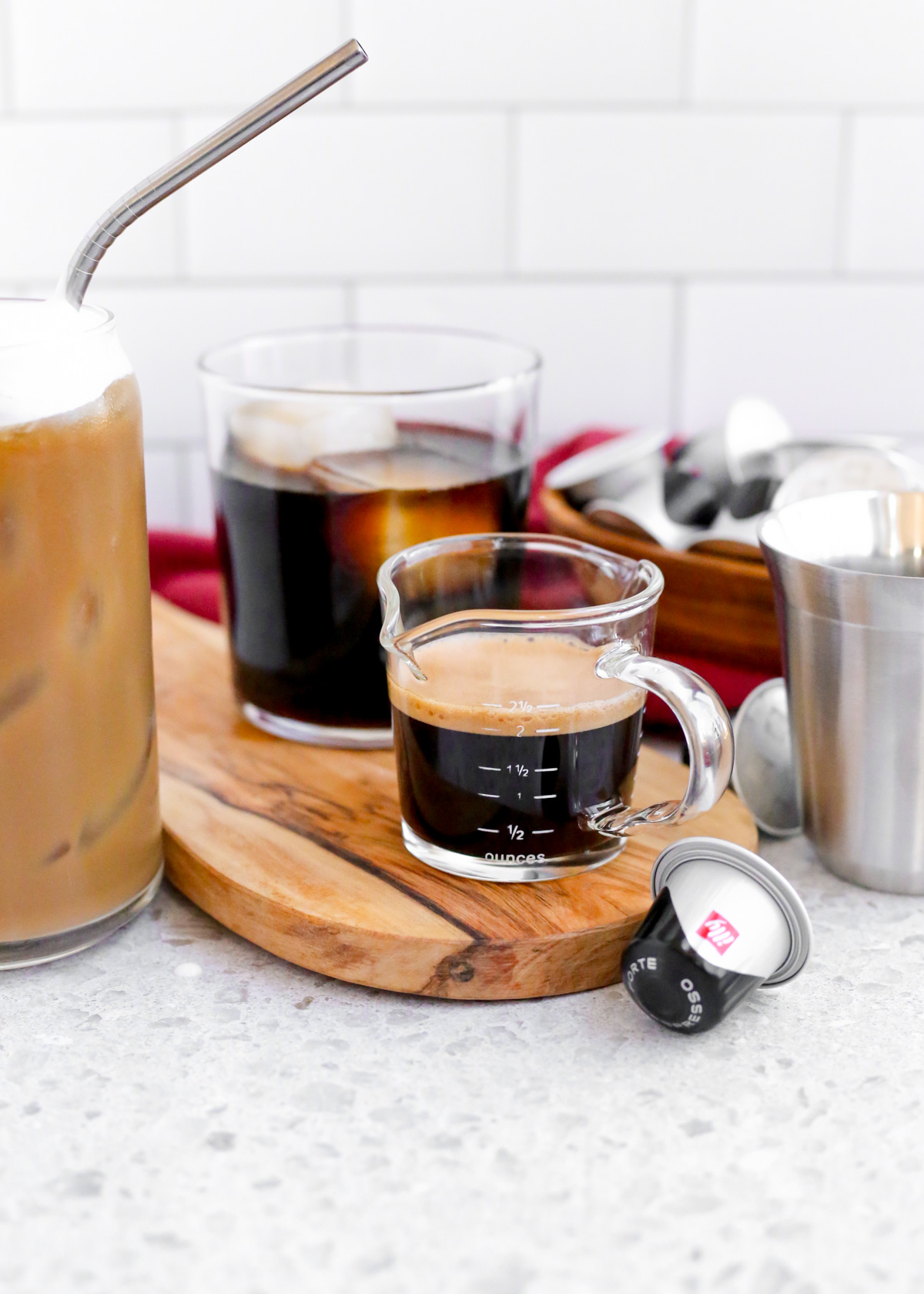
Let’s start with some basic definitions so we’re all on the same page.
Overview of Coffee Brewing Methods
Brewed Coffee: Regular coffee can be made with a basic coffee maker (drip coffee), French press, or with a pour over method. It’s one of the most convenient and common ways to make coffee, especially at home. To make a regular cup of coffee, you just need hot water, ground coffee beans, and a way to let the water filter through.
Cold Brew Coffee: Cold brew is a longer, slower brewing method that involves steeping ground beans in cold water for an extended period, usually overnight. This can also be done at room temperature. The result is a smooth, mellow, subtly sweet coffee drink with low acidity. You can make it at home or buy bottled cold brew coffee. Bottled versions come ready-to-drink or as cold brew concentrate, which is undiluted and has a much more intense coffee flavor and higher caffeine content.
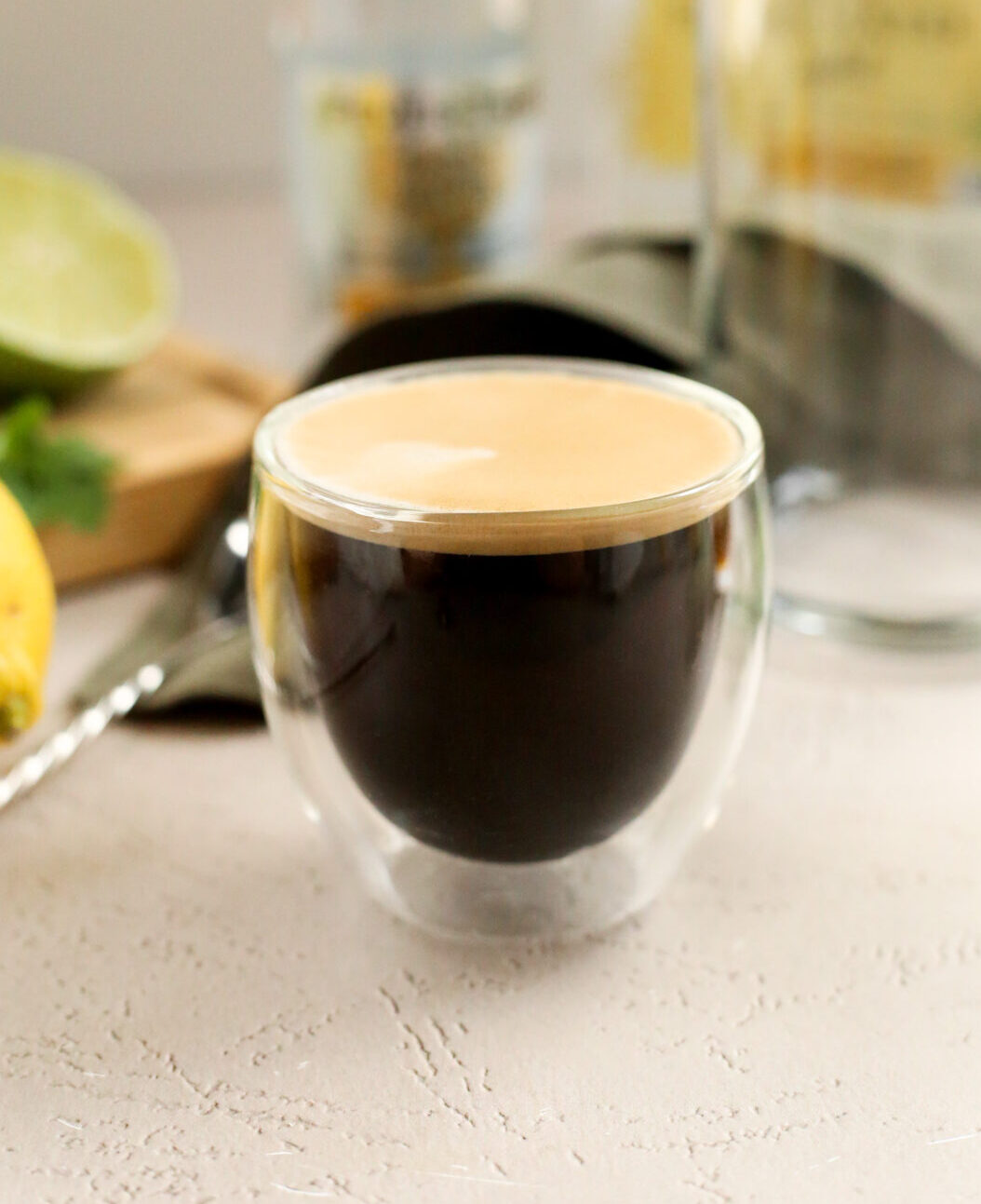
Espresso: Espresso is a concentrated coffee made by forcing hot water through finely ground coffee under high pressure. It takes just seconds to make a single shot of espresso. It depends on the flavor profile and grind size, but espresso boasts bold, rich flavors and a complex taste profile. Drink it alone (a popular choice) or blend with milk to make trendy lattes, cappuccinos, macchiatos, or other espresso drinks like espresso tonic or americanos.
Iced Coffee: Iced coffee is really more about the serving temperature than the brewing method. It’s a broad category that refers to coffee (brewed through any method) served chilled or over ice cubes. In this sense, cold brew is a type of iced coffee, but you can also chill an espresso shot for iced americanos, iced lattes, and more. Iced coffee is especially popular during hot summer months. And in recent years, the younger generations seem to prefer it year-round.
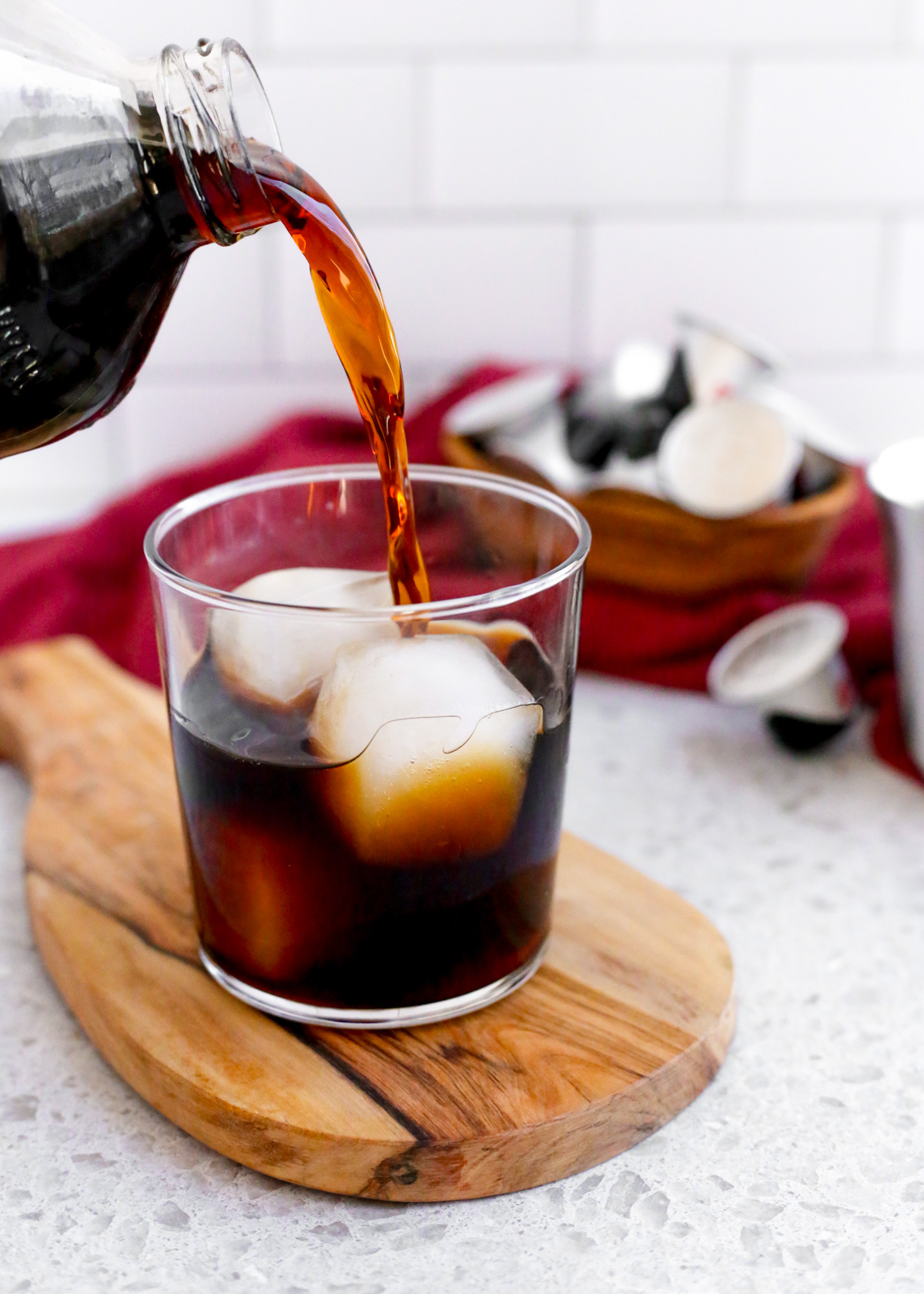
Brewing Time for Cold Brew and Espresso
There’s a huge difference in brewing time for these two coffee-making methods. Basically, do you want your coffee in seconds, or hours?
The cold brewing process takes 12-24 hours. Some methods call for as long as 48 hours. Ground coffee beans are covered in cold or room temperature water to slowly diffuse into a concentrate. The end result can later be diluted with water, milk, syrups, or other ingredients for your coffee drinks.
It’s definitely a plan-ahead process, so account for that if you’re craving a caffeine fix right now. There are many methods for homemade cold brew, and many products out there to make it more convenient. But because it takes so long, some coffee companies got smart. Now you can buy a bottled version of cold brew coffee concentrate or ready-to-drink options. Just pour these straight from the bottle and you can have nearly-instant iced coffee.

On the other hand, making a shot of espresso takes less than a minute. You do need some special equipment (more on that below in the cost section). But if you’re in a rush, this is the way to go. Use an at-home espresso maker or swing by your local coffee shop.
Espresso is the clear winner for speed with a much shorter brewing time compared to cold brew.
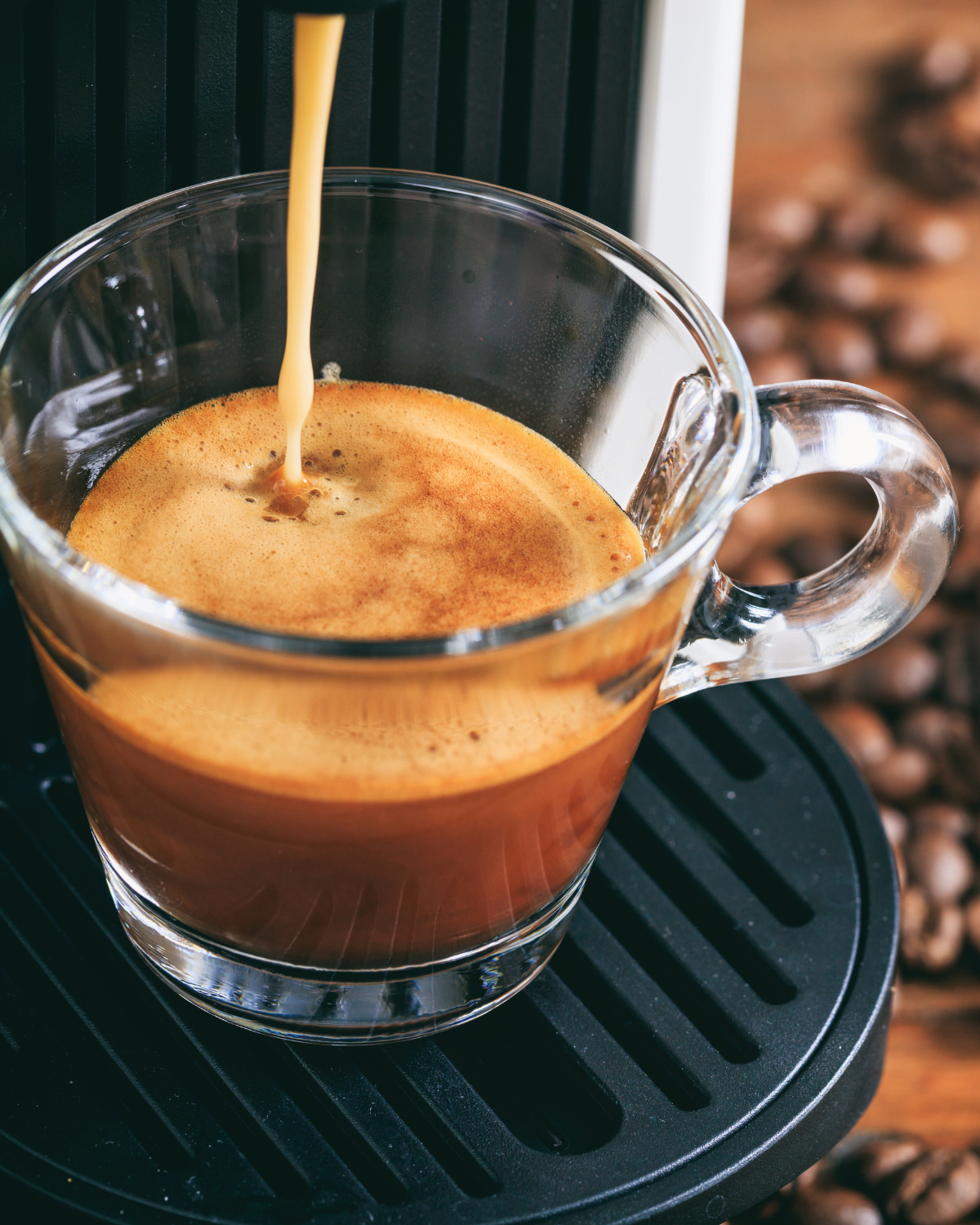
Cold Brew Coffee vs. Espresso Flavor
The main difference when it comes to flavor is smoothness. That’s probably the best word to describe how cold brew coffee tastes compared to espresso.
Cold brew has lower acidity, offering a full body and a mouthfeel you might describe as velvety. You might pick up on some of the natural sweetness, or other flavors like chocolate, caramel, or nutty or floral notes. If you’re not a fan of black coffee, you might enjoy the sweeter taste of cold brew.
On the other hand, espresso has a bold, robust flavor that’s much more in-your-face. Part of this is enhanced by the hot temperature, which can intensify the aromatic compounds we detect through taste buds in our mouth and nasal cavity.
And on top of that, you’ll notice much higher acidity which might taste sharp or slightly tangy. Espresso has its own unique mouthfeel, brought about by the quick extraction of oils and solids from the coffee beans. It’s a more complex, layered flavor experience compared to cold brew, which is more mellow.
Other Flavor Factors to Consider
The brew method is not the only thing impacting coffee flavor. It also has a lot to do with the coffee beans themselves.
- Origin and Variety: Coffee beans are grown around the world in hot climates, with different regions producing unique characteristics. The two most common types of coffee beans are arabica and robusta, each offering a unique range of different flavors and bitter compounds.
- Roast Level: Coffee beans are roasted before grinding and brewing to bring out the flavor, reduce moisture, and extend shelf life. A light roast allow more of the bean’s original flavors to come through, while darker roasts tend to taste more…well, roasted.
- Grind Size, Water Quality, Brewing Time and Water Temperature, and Ratio of Coffee to Water: These are all specs that coffee enthusiasts will fine-tune to get their “perfect” cup of coffee. To some, the difference is too subtle to worry about, but if you’re an aspiring coffee connoisseur it’s worth experimenting to learn more about these details.
And of course, don’t forget about freshness! This is likely the most important factor you can control. Coffee is a perishable product, so don’t make the mistake of thinking your beans will last forever.
Stale beans will taste dull, flat, or overly bitter. If you can’t remember when you bought your beans, get a new batch. Grind them just before brewing for rich flavor.

Cold Brew Coffee vs. Espresso Caffeine Content
Any guesses as to which one has more caffeine? The answer might surprise you.
The short answer: it depends.
Here’s the longer, complete answer. Cold brew doesn’t automatically have more caffeine than espresso. Cold brew steeps for an extended period of time, resulting in lower caffeine extraction.
However, if the concentrate isn’t diluted, it packs a pretty hefty punch. Cold brew drinks made from concentrate are closer to 100-110 milligrams of caffeine per 8 oz. serving, or more. But this depends on the brand and brewing specs. It’s hard to accurately estimate caffeine content if making cold brew at home.
Espresso has about 150 milligrams of caffeine per 1.5 oz espresso shot. It’s not uncommon to add two shots or use an oversized shot for certain coffee drinks.
Compare this to about 80-85 milligrams of caffeine in an 8 oz. serving of regular coffee. Decaf options have even less caffeine (contrary to popular belief, there is still some caffeine present).
Depending on how much coffee you drink, it can be easy to exceed the recommend 400 mg/day limit. Although caffeine is a natural stimulant that can make you feel awake and alert, there are some downsides to having too much.
How much is too much? Well, 400 mg/day is likely fine for some people. But others should have much less or avoid it altogether. This includes:
- Children under age 12, who should avoid caffeinated drinks, although teens can have one cup of coffee or about 100 milligrams of caffeine per day
- People who are pregnant or breastfeeding, who should keep their intake below 200 mg/day
- If you’re taking anti-anxiety medications, have high blood pressure, heart disease, or other health concerns, check with your healthcare team before consuming caffeine
Cold Brew Coffee vs. Espresso Cost
I’m always fascinated by the economics of food. And in this case, drinks. I’ve always stuck to a budget and although I’m fortunate to have some financial stability at this point, I’m still conscious of costs. Coffee is no exception!
From the type of coffee beans you buy to the accessories you use when brewing, the costs can add up quickly. However, I think any method of making coffee at home is more economical in the long run. As much as I love supporting my favorite local coffee shops, it’s not something I can afford to do every day!
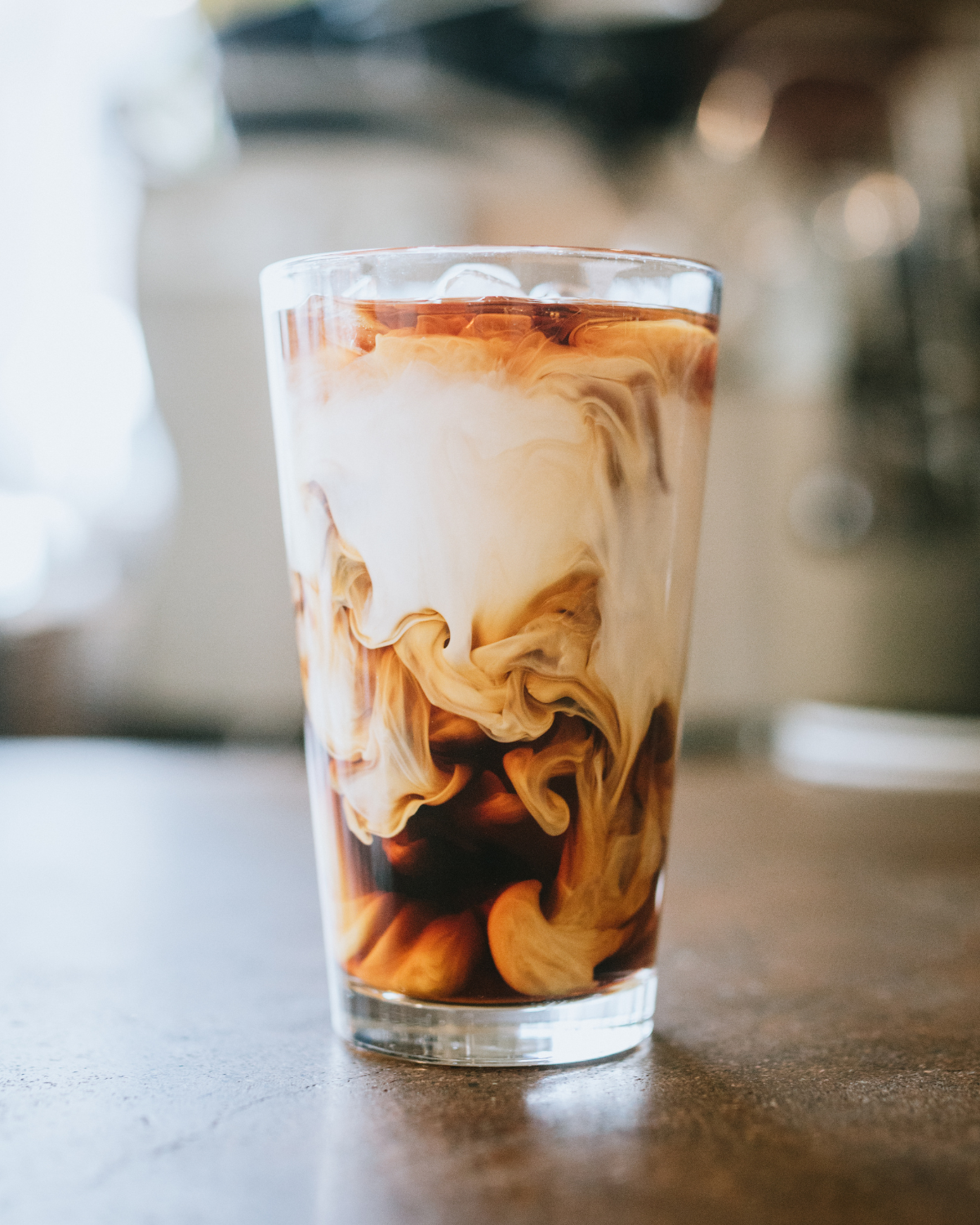
One important factor to consider is that cold brewing is less efficient than espresso, French press, or drip coffee. Meaning, you’ll need to grind more beans and use a higher coffee to water ratio to make cold brew at home.
Here’s the main takeaways when it comes to total cost:
- DIY Cold Brew is cheaper at first, with less special equipment needed. But it costs more time. And since it uses more coffee grounds, there’s the ongoing expense which can vary widely depending on the quality and sourcing of the coffee beans.
- Bottled Cold Brew carries some sticker shock, but the cost per ounce, especially for cold brew concentrate, is usually reasonable. It’s certainly less expensive to pay $10-$15 for 32 oz at the grocery store, and dilute it with water or milk at home, than to buy individual drinks from a coffee shop which can be $5-7 per drink.
- Espresso has a significantly higher upfront cost. You need a coffee grinder, tamp, and espresso machine which can add up to hundreds of dollars. A top quality or imported machine can run you into the thousands. But the per-cup cost is lower and you’ll save considerable time with less waste.
- Pod-Based Espresso Machines can also be expensive, and individual pods may cost up to $1-2 for one-time use. It’s convenient, but this creates more waste compared to other coffee brewing methods, too.
There’s no “right” or “wrong” answer here. But when weighing the costs, be sure to think about your lifestyle, values, and other priorities when deciding what to invest in.
Recipe Inspiration and What to Make
Now that you’re an expert in cold brew coffee vs. espresso, let’s make something refreshing to sip on!
There are endless possibilities for both types of coffee. From hot to cold, not-so-sweet to overly sweet, smoothies or coffee-flavored food, there’s a ton of creative ways to get your coffee fix. I mean, did you see how the espresso martini trend skyrocketed this year?
Start with these favorites from the Street Smart Nutrition Blog:
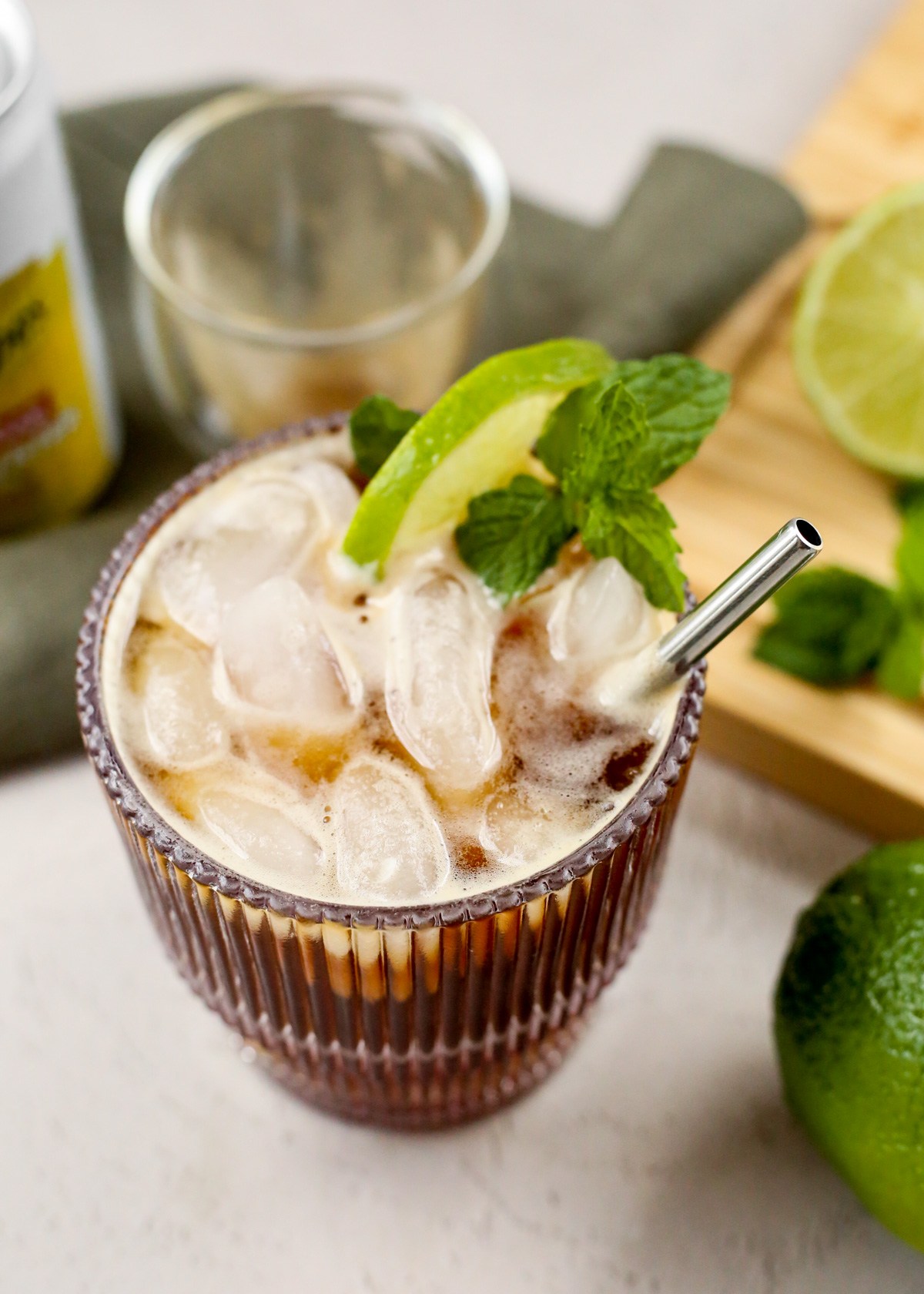
Then try these delicious options from some of my favorite fellow food bloggers:
- Dirty Chai Latte from Masala and Chai
- Salted Cream Cold Foam Cold Brew Coffee from Plays Well With Butter
- Iced Pumpkin Spice Latte from My Everyday Table
The Bottom Line
At the end of the day, both cold brew coffee and espresso deliver what you’re probably looking for in a cup of coffee: caffeine, flavor, and something tasty to sip on.
Ultimately, it comes down to what you want and need for your coffee experience. Something hot, quick, and strong? Go with espresso. Something chilled, mellow, and super sip-able? Cold brew comes out on top.
Both options taste delicious, whether served alone or mixed with milk, syrups, or other flavors. And both have brew time and cost factors to consider, too. Stick with your personal preference, as well as your budget and lifestyle habits.
Whichever is your ideal choice, I hope you feel more informed and confident now. And remember, a different option is always waiting for you at a local coffee shop or on the grocery store shelf!
